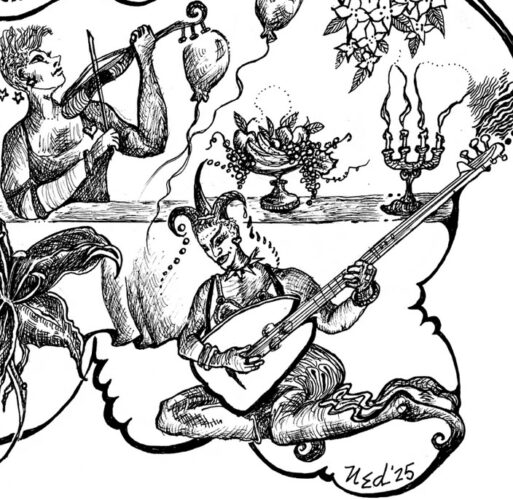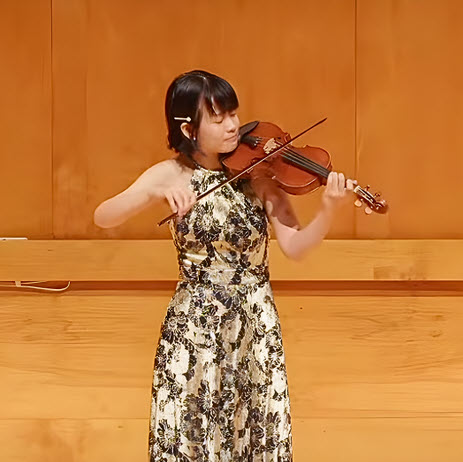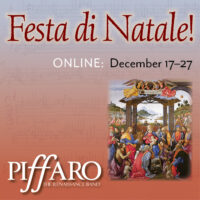by Tina Chancey
Published June 30, 2025
At the 2025 Boston Early Music Festival, an event that I particularly enjoyed as an audience member was Rumbarroco’s Fringe Concert of Latin-Baroque Fusion. Like the group Constantinople (also one of this year’s Festival Concerts), Rumbarroco’s musicians go way beyond the “point and smile” version of cross-cultural performance so popular decades ago, when large chunks of grant money flowed to groups making tenuous connections between the musics of Indigenous populations and the Europeans who colonized them. Most early musicians didn’t even try to learn traditional styles from the musicians they shared the stage with; thus, the point and smile approach, like musical tourists.

In the early 1980s, my group HESPERUS became an ensemble-in-residence at the Smithsonian’s National Museum of American History, through its Public Programs office. Our supervisor, Howard Bass, wisely anticipating the Columbus Quincentenary celebrations of 1992, gave us a ten-year mission of exploring the musical interactions between Spanish and Portuguese Jesuit and court composers, and the Central and South American Indigenous musicians whom they taught, learned from, and ultimately collaborated with between the 16th through 19th centuries. For a decade we researched, performed, and ultimately recorded exciting music — early-traditional fusions that were very different from their European models, playing with traditional groups like Andes Manta, an Ecuadorian family band.
At the time there was very little academic interest in Spanish Colonial music, and few early-music ensembles performed it. Isolated scholars like Robert Murrell Stevenson published hand-written scores of music they found, rummaging through the archives of rural missions and cathedral churches in Bolivia, Ecuador, Colombia, and Mexico. The Spanish Embassy gave HESPERUS a grant to visit Alfred Lemmon, a former Jesuit priest and avid collector of musical manuscripts, originally stationed in South America, retired to New Orleans, and with his permission we basically pirated his music library.
The result was “Spain in the New World,” our 1988 CD with tonadas, villancicos, cantatas and hymns in Spanish, Nahuatl, Chilidugu, Canichana, and Mixtec (these text were all relatively easy to pronounce, since the Indigenous languages had been transcribed phonetically by the visiting Spanish composers). In 1992, when early-music groups were desperately combing the libraries for Spanish Colonial repertoire, “Spain in the New World” was played in every Smithsonian museum on the National Mall, and HESPERUS was launched.
My favorite anecdote from that time; when HESPERUS was in Bolivia performing at the Missiones de los Chiquitos festival, the choral director at one mission shared with us some music written by a local 17th-century composer, and we were able to say, “and here’s a recording of that,” and handed him our CD.
Back to the present at the BEMF Fringe: you can see that Rumbarroco’s repertoire wasn’t unfamiliar to many of us in the audience. However, two things made this performance special. One was ensemble Director Laury Gutiérrez’s idea to accompany pieces from different Latin American countries with Indigenous rhythms from that particular country. One example, they performed Tonada El Congo from the 18th-century Peruvian Codice Trujillo, accompanying it with the rhythm of Congorito, derived from an Afro-Peruvian dance. Using these traditional rhythmic patterns gave a real depth of character to the piece, gave it distinction.
The other novel element was the diversity of the performers. Their wide range of backgrounds and performance styles gave a new piquancy to the word “blend” and was particularly obvious in the way they improvised. Rumbarrocco musicians included, in part, Colombian soprano Lina Sarmiento, making her very welcome BEMF debut, with a background in classical, folk, and early music, and with experience in both opera and zarzuela; Kirsten Lamb, double bass player, who performs jazz, folk, classical, and contemporary music and picked up the viol at Oberlin; Eduardo Betancourt, an iconic Venezuelan harpist, improviser, producer, and arranger who plays by ear; and violinist Danilo Bonina, classically trained, who doesn’t improvise and wrote out all his solos. Of the remaining five, some have early-music training, others have purely traditional experience. This intersection of cultures gave the group an excitement and intensity that was refreshing to watch and hear. Seldom have I enjoyed a concert more. I think that my late husband and HESPERUS founder Scott Reiss would have been very happy to welcome Rumbarroco into our musical family.
Tina Chancey is director of HESPERUS, a member of Trio Sefardi, Trio Pardessus, and Passio. She plays early bowed strings, teaches, writes, produces recordings, and so much more.




